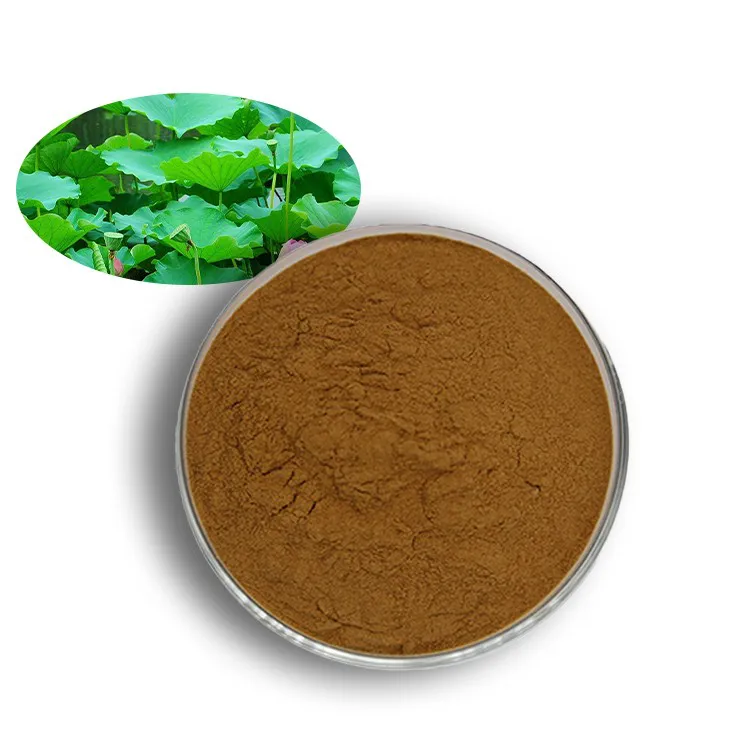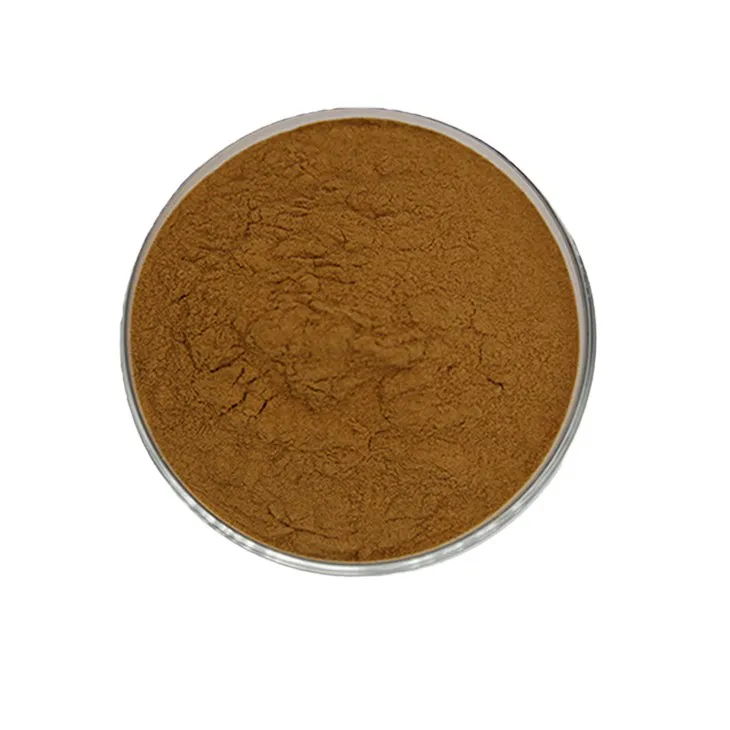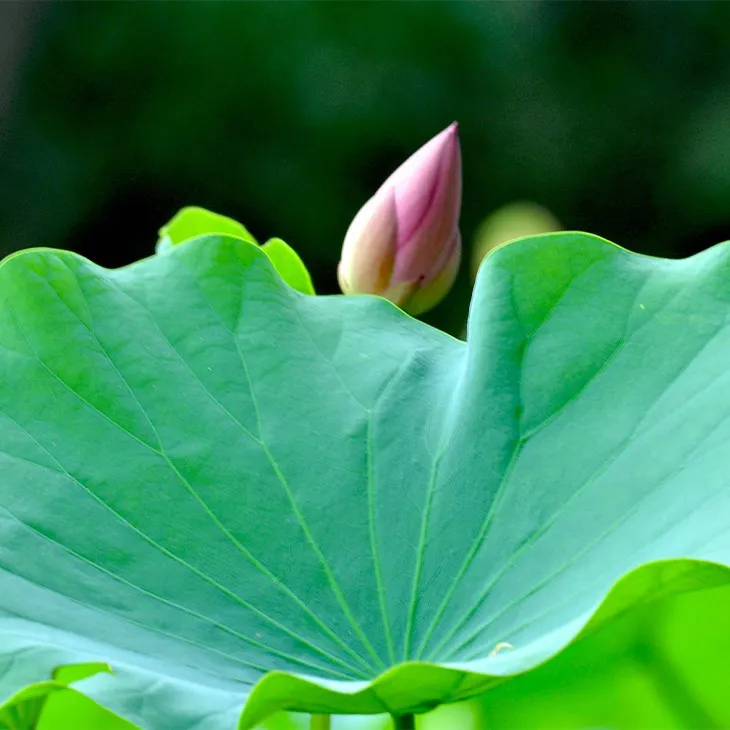- 0086-571-85302990
- sales@greenskybio.com
Supercritical Carbon Dioxide Extraction of Lotus Leaf Extracts
2024-11-28

1. Introduction
Supercritical carbon dioxide extraction of Lotus leaf extract has emerged as a highly promising and innovative technique in recent years. Lotus leaves, which are widely distributed in many regions, are not only a symbol of beauty in traditional culture but also a rich source of various bioactive compounds. The extraction of valuable substances from lotus leaves has attracted increasing attention due to their potential applications in multiple fields.

2. The Concept of Supercritical Carbon Dioxide Extraction
2.1 Supercritical State
Carbon dioxide (CO₂) has a critical point at a specific temperature and pressure. When the temperature and pressure of CO₂ are above its critical values (critical temperature \(T_{c} = 31.1^{\circ}C\) and critical pressure \(P_{c}= 7.38MPa\)), it enters the supercritical state. In this state, CO₂ has unique properties that are intermediate between those of a gas and a liquid. It has a relatively low viscosity like a gas, which enables it to penetrate into the matrix of lotus leaves easily, and at the same time, it has a density similar to that of a liquid, allowing it to dissolve various substances effectively.2.2 The Extraction Process
The supercritical CO₂ extraction process typically involves several steps. First, the CO₂ is pressurized and heated to reach the supercritical state. Then, the supercritical CO₂ is passed through the lotus leaf material. During this process, the bioactive compounds in the lotus leaves, such as flavonoids, alkaloids, and polyphenols, are dissolved into the supercritical CO₂. After that, the solution is depressurized and cooled, causing the CO₂ to return to its gaseous state, and the extracted substances are collected.
3. Advantages of Supercritical Carbon Dioxide Extraction
3.1 Mild Extraction Conditions
One of the most significant advantages of supercritical CO₂ extraction is its mild extraction conditions. Compared with traditional extraction methods such as solvent extraction, supercritical CO₂ extraction operates at relatively low temperatures. This is crucial for preserving the activity of the bioactive components in lotus leaves. High temperatures in some traditional extraction methods may cause the degradation or denaturation of these valuable compounds, but supercritical CO₂ extraction can avoid this problem.3.2 Environmentally Friendly
Carbon dioxide is a non - toxic, non - flammable, and inexpensive gas. It is a natural component of the atmosphere. After the extraction process, the CO₂ can be easily recycled and reused, which reduces environmental pollution. In contrast, traditional solvent extraction methods often use organic solvents such as hexane or ethanol, which may pose environmental risks if not properly disposed of.3.3 Selective Extraction
By adjusting the temperature, pressure, and other parameters of the supercritical CO₂ extraction process, it is possible to selectively extract specific bioactive compounds from lotus leaves. This selectivity is very important for obtaining high - purity and high - quality extracts. For example, if the main target is to extract flavonoids, appropriate parameters can be set to ensure that the extraction process mainly targets flavonoids while minimizing the extraction of other unwanted substances.
4. Bioactive Compounds in Lotus Leaves
4.1 Flavonoids
Flavonoids are a large class of phenolic compounds widely present in lotus leaves. They are known for their strong antioxidant properties. Flavonoids can scavenge free radicals in the body, which are associated with various diseases such as cancer, cardiovascular diseases, and neurodegenerative diseases. In lotus leaves, flavonoids also contribute to the plant's resistance to environmental stresses.4.2 Alkaloids
Alkaloids are another important group of bioactive compounds in lotus leaves. Some alkaloids have shown potential pharmacological activities, such as anti - inflammatory, analgesic, and antibacterial effects. These alkaloids play important roles in the traditional medicinal uses of lotus leaves in some cultures.4.3 Polyphenols
Polyphenols in lotus leaves are also rich in antioxidant components. They can inhibit lipid peroxidation, which is beneficial for maintaining the health of cells and tissues. Moreover, polyphenols may also have a role in regulating the body's immune system.
5. Potential Applications of Lotus leaf extracts
5.1 In the Field of Medicine
Due to their antioxidant, anti - inflammatory, and lipid - lowering properties, Lotus leaf extracts have potential applications in medicine. For example, they may be used as ingredients in drugs for treating metabolic syndrome, which is characterized by obesity, hypertension, hyperglycemia, and dyslipidemia. The anti - inflammatory properties of the extracts may also be beneficial for treating inflammatory diseases such as arthritis.- Antioxidant activity: The flavonoids and polyphenols in lotus leaf extracts can neutralize free radicals, reducing oxidative stress in the body. This may help prevent chronic diseases associated with oxidative damage.
- Anti - inflammatory effect: Alkaloids and other components in the extracts can modulate the body's inflammatory response, potentially reducing inflammation in affected tissues.
- Lipid - lowering potential: Some studies have suggested that lotus leaf extracts may help lower blood lipid levels, which is important for cardiovascular health.
5.2 In the Field of Cosmetics
The antioxidant and anti - inflammatory properties of lotus leaf extracts also make them suitable for use in cosmetics. They can be added to skincare products such as creams, lotions, and serums.- Skin protection: The extracts can protect the skin from environmental damage, such as UV radiation and pollution, by scavenging free radicals on the skin surface.
- Anti - aging effect: By reducing oxidative stress and inflammation, lotus leaf extracts may help delay the aging process of the skin, such as reducing wrinkles and improving skin elasticity.
5.3 In the Field of Food
Lotus leaf extracts can be used as natural additives in the food industry. They can be added to beverages, such as tea or functional drinks, to enhance their antioxidant properties.- Flavor enhancement: In some traditional cultures, lotus leaves are used to add a unique flavor to food. The extracts can also contribute to the flavor profile of food and beverages.
- Preservative potential: Due to their antioxidant and antimicrobial properties, lotus leaf extracts may help extend the shelf life of food products.
6. Challenges and Future Directions
6.1 Cost - effectiveness
Although supercritical CO₂ extraction has many advantages, the initial investment in equipment for this extraction method is relatively high. The high - pressure and temperature - control systems required for the supercritical state are complex and expensive. Therefore, improving the cost - effectiveness of the extraction process is an important challenge. Research is needed to optimize the extraction parameters and equipment design to reduce costs while maintaining high - quality extraction.6.2 Scale - up Production
Currently, most of the supercritical CO₂ extraction of lotus leaf extract is carried out on a small or laboratory scale. Scaling up this extraction method to industrial - scale production still faces many technical and economic challenges. Issues such as uniform mass transfer, efficient separation, and large - scale equipment operation need to be addressed.6.3 Further Research on Bioactive Compounds
While we have a basic understanding of some bioactive compounds in lotus leaves, there is still much to be explored. More in - depth research is needed to fully understand the mechanisms of action of these compounds, their interactions with other substances in the body, and potential new bioactive components. This will help to better develop and utilize lotus leaf extracts in various fields.7. Conclusion
Supercritical carbon dioxide extraction of lotus leaf extract is a highly advanced and efficient technique with great potential. The mild extraction conditions can preserve the activity of bioactive components in lotus leaves, and the extracted substances such as flavonoids, alkaloids, and polyphenols have a wide range of potential applications in medicine, cosmetics, and food. However, challenges such as cost - effectiveness and scale - up production need to be overcome. With further research and development, supercritical CO₂ extraction of lotus leaf extract is expected to play an increasingly important role in various industries.
FAQ:
What are the main bioactive compounds in lotus leaves?
Lotus leaves are rich in flavonoids, alkaloids, and polyphenols. These compounds are important bioactive substances that contribute to the various properties of lotus leaf extracts.
Why is supercritical CO₂ extraction suitable for lotus leaf extracts?
Supercritical CO₂ extraction offers mild extraction conditions. This is crucial as it can preserve the activity of the components in lotus leaves during the extraction process, ensuring the integrity and effectiveness of the extracted substances.
What are the potential applications of lotus leaf extracts in the medical field?
Due to their antioxidant, anti - inflammatory, and lipid - lowering properties, lotus leaf extracts can be used in the development of drugs for treating related diseases or as supplements to support health. For example, they may help in reducing inflammation in the body or improving lipid profiles.
How do the antioxidant properties of lotus leaf extracts benefit the cosmetics industry?
The antioxidant properties of lotus leaf extracts can prevent oxidative damage to the skin. In cosmetics, this can be used to develop products like creams and lotions that help in anti - aging, protecting the skin from environmental stressors, and maintaining skin health.
Can supercritical CO₂ extraction fully extract all valuable substances from lotus leaves?
While supercritical CO₂ extraction is highly effective, it may not be able to fully extract all valuable substances from lotus leaves. However, it can extract a significant amount of important components such as flavonoids, alkaloids, and polyphenols. The extraction efficiency may also depend on factors like extraction parameters and the nature of the lotus leaf sample.
Related literature
- Supercritical Fluid Extraction of Bioactive Compounds from Plants"
- "Lotus Leaf: A Source of Natural Bioactive Compounds and Their Potential Applications"
- "Advances in Supercritical Carbon Dioxide Extraction Technology for Herbal Extracts"
- ▶ Hesperidin
- ▶ citrus bioflavonoids
- ▶ plant extract
- ▶ lycopene
- ▶ Diosmin
- ▶ Grape seed extract
- ▶ Sea buckthorn Juice Powder
- ▶ Beetroot powder
- ▶ Hops Extract
- ▶ Artichoke Extract
- ▶ Reishi mushroom extract
- ▶ Astaxanthin
- ▶ Green Tea Extract
- ▶ Curcumin Extract
- ▶ Horse Chestnut Extract
- ▶ Other Problems
- ▶ Boswellia Serrata Extract
- ▶ Resveratrol Extract
- ▶ Marigold Extract
- ▶ Grape Leaf Extract
- ▶ blog3
- ▶ blog4
- ▶ blog5
-
The best lemon juice powder in nature.
2024-11-28
-
Organic Vitamin K2 Powder Suppliers
2024-11-28
-
Bulk purchase of L - tyrosine.
2024-11-28
-
Vitamin K2 Manufacturers
2024-11-28
-
100% Pure Natural Rutin.
2024-11-28
-
Chinese Citrus Bioflavonoid Suppliers.
2024-11-28
-
Bilberry Extract
2024-11-28
-
Bayberry Extract
2024-11-28
-
Epimedium extract powder
2024-11-28
-
Peppermint Oil
2024-11-28
-
Red Vine Extract
2024-11-28
-
Okra Extract
2024-11-28
-
Cranberry Extract
2024-11-28
-
Black Garlic Extract
2024-11-28
-
Curcuma Longa Extract
2024-11-28
-
Shikone Extract
2024-11-28





















